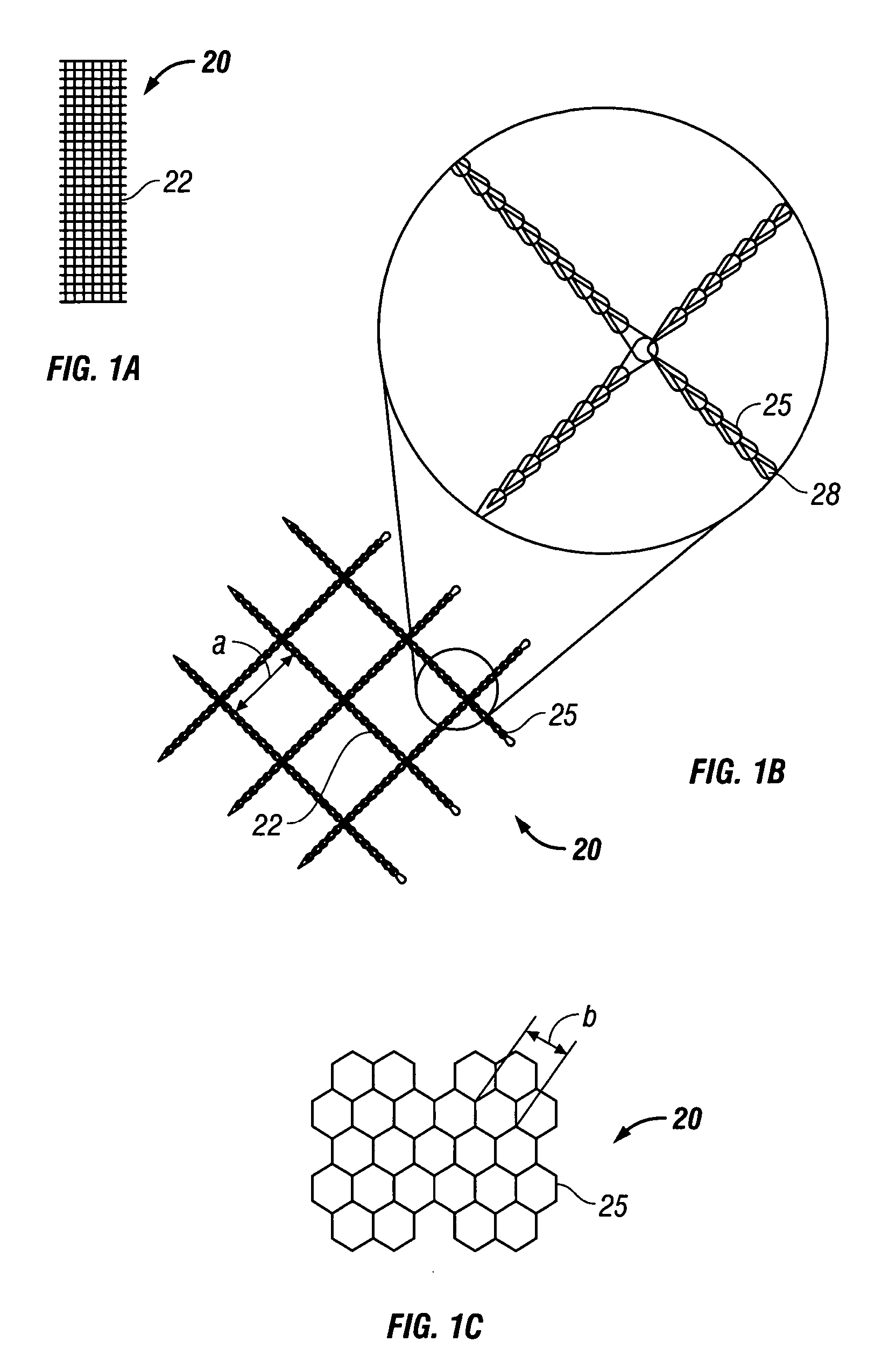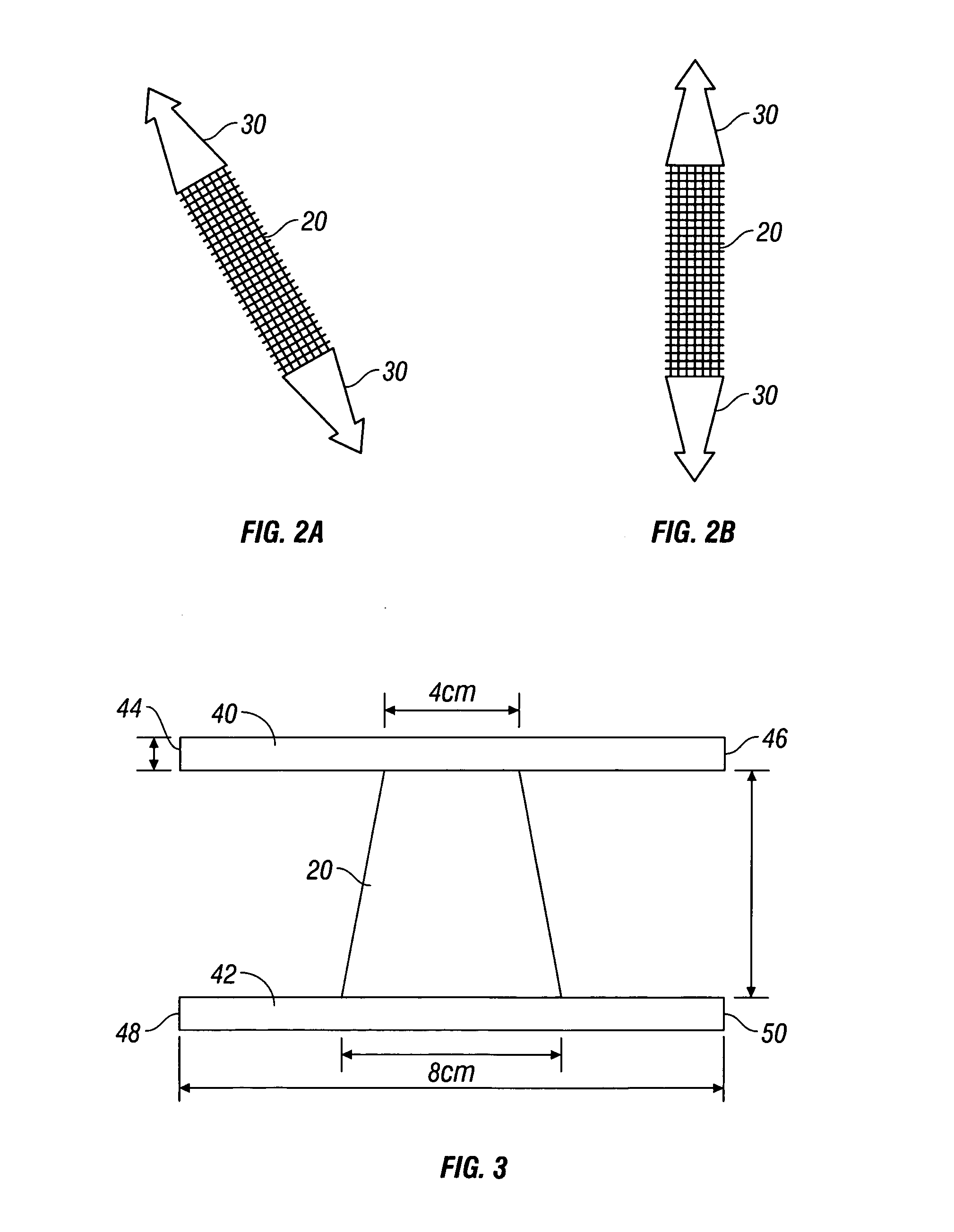Mesh implant
- Summary
- Abstract
- Description
- Claims
- Application Information
AI Technical Summary
Benefits of technology
Problems solved by technology
Method used
Image
Examples
Embodiment Construction
[0023] According to the present disclosure there is provided a surgical implant suitable for use as a sling in a procedure to treat urinary incontinence. The implant includes a mesh, typically in a sling or tape configuration, made of a biocompatible material. The mesh implant typically has a maximum residual mass density of about 30 g / m2 to about 60 g / m2. The residual mass density is the mass density of the mesh after implantation and the absorption of any bioabsorbable coatings.
[0024] The mesh implant of the present disclosure is made of strands which, in turn, may be made of filaments of any suitable biocompatible material. Suitable materials from which the mesh can be made should have the following characteristics: biocompatibility; sufficient tensile strength to support the urethra or bladder neck for treating urinary incontinence; sufficiently inert to avoid foreign body reactions when retained in the human body for long periods of time; exhibit minimal allergic and / or inflam...
PUM
 Login to View More
Login to View More Abstract
Description
Claims
Application Information
 Login to View More
Login to View More - R&D
- Intellectual Property
- Life Sciences
- Materials
- Tech Scout
- Unparalleled Data Quality
- Higher Quality Content
- 60% Fewer Hallucinations
Browse by: Latest US Patents, China's latest patents, Technical Efficacy Thesaurus, Application Domain, Technology Topic, Popular Technical Reports.
© 2025 PatSnap. All rights reserved.Legal|Privacy policy|Modern Slavery Act Transparency Statement|Sitemap|About US| Contact US: help@patsnap.com



